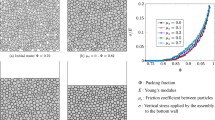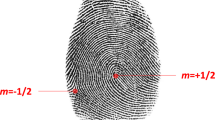Abstract
The presence of impurities in a crystal lattice is one of the causes of anelasticity of solids. Impurities in single crystals may lead to relaxation of the Snoek [1] and Zener [2] type, and affect the level of dislocation internal friction [3]. In polycrystals there is yet another mechanism of relaxation, i.e., the “uphill” diffusion of impurity atoms in a random elastic stress field produced by the deformation of randomly oriented crystals. This mechanism may contribute to the internal friction, elastic aftereffect and transient creep. Diffusion relaxation of this kind was first analyzed by Zener [4] who, having concluded that the difference between the relaxation and nonrelaxation moduli cannot be accurately calculated, estimated the order of magnitude of this difference; he based this estimation on the calculation of a second-order moment function from the reciprocal of the Young's modulus. An implicit assumption in Zener's model is that the elastic strain of a crystal is determined only by the orientation of its crystallographic axes and on the external applied force field, being independent of the strains of adjacent crystals. The inadequacy of such a model for a polycrystal is evident. Moreover, this approach does not allow to obtain the distribution function of relaxation times. An accurate computation of the intensity of relaxation in polycrystals of an arbitrary crystal symmetry, which takes into account pair correlations between the separate grains, is presented in this article.
Similar content being viewed by others
References
J. L. Snoek, Investigations in the Field of New Ferromagnetic Materials [Russian translation], Izd. inostr. lit., 1949.
A. S. Novik and D. F. Serafim, “The magnitude of Zener relaxation in alloys,” collection: Internai Friction of Metals [in Russian], Metallurgizdat, p. 117, 1963.
D. C. Niblett and J. Wilkes, “Dislocation-induced internal friction of metals,” collection: Internal Friction of Metals [in Russian], Metallurgizdat, p. 25, 1963.
C. M. Zener, collection: Elasticity and Anelasticity of Metals [Russian translation], Izd. inostr. lit., 1954.
S. T. Konobeevskii, “On the theory of phase transformations,” Zh. eksperim. i teor. fiz., vol. 13, p. 200, 1943.
B. Ya. Lyubov and N. S. Fastov, “Effect of concentration stresses on diffusion in solid solutions,” DAN SSSR, vol. 84, no. 5, p. 939, 1952.
B. Ya. Lyubov, “Effect of stresses produced during the decomposition of solid solutions on the rate of growth of new phase nuclei,” Zh. tekhn. fiz., vol. 20, p. 1344, 1950.
L. N. Aleksandrov and B. Ya. Lyubov, “Effect of concentration stresses on the rate of lateral growth of pearlite grains,” DAN SSSR, vol. 74, p. 1081, 1950.
B. M. Darinskii and T. D. Shermergor, “Temperature relaxation in cubic crystals,” Fiz. metallov i metallovedenie, vol. 18, no. 5, p. 645, 1964.
I. M. Lifshitz and L. N. Rozentsveig, “On the theory of elastic properties of polycrystals,” Zh. eksperim i teor. fiz., vol. 16, no. 11, p. 967, 1946.
L. N. Aleksandrov, “Concentration stresses near a growing spherical nucleus of a new phase in solid solutions, “ Izv. vyssh. uchebn. zaved., Chernaya metallurgiya, no. 2, p. 118, 1962.
W. Seith, Diffusion in Metals [Russian translation], Izd. inostr. lit., 1958.
M. A. Krivoglaz, “Anisotropy of diffusion in cubic crystals,” Fiz. metallov i metallovedenie, vol. 17, no. 2, p. 161, 1964.
Author information
Authors and Affiliations
Rights and permissions
About this article
Cite this article
Darinskii, B.M., Shermergor, T.D. On the theory of diffusion relaxation in polycrystals. J Appl Mech Tech Phys 6, 54–57 (1965). https://doi.org/10.1007/BF00913383
Issue Date:
DOI: https://doi.org/10.1007/BF00913383




